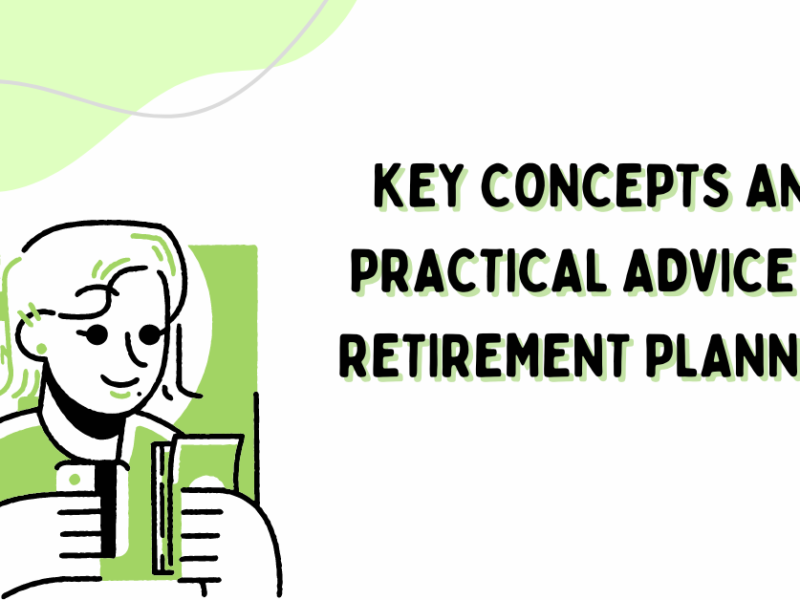Retirement is a significant milestone in life, representing the culmination of years of hard work and dedication. It marks the transition from a career-focused lifestyle to a period of relaxation, exploration, and enjoying the fruits of your labor. However, achieving a secure and comfortable retirement requires careful planning and preparation. This comprehensive guide will delve into the essential aspects of retirement planning, providing practical tips, strategies, and insights to help you secure your future and enjoy a fulfilling retirement.

1. Understanding Retirement Planning
Retirement planning is setting financial goals, developing strategies to achieve those goals, and making informed decisions to ensure a comfortable and secure retirement. It involves assessing your current financial situation, estimating your future expenses, and determining how much you need to save to maintain your desired standard of living during retirement.
2. Assessing Your Retirement Needs
The first step in retirement planning is to assess your retirement needs by estimating your future expenses. Consider factors such as housing, healthcare, food, transportation, leisure activities, and other expenses you expect to incur during retirement. Use online calculators and financial planning tools, or consult a financial advisor to help determine how much you need to save for retirement.
3. Creating a Retirement Budget
Once you have estimated your retirement needs, create a budget outlining your expected income and expenses during retirement. Factor in sources of retirement income such as Social Security, pensions, retirement savings accounts, and any other sources of income you may have. Then, estimate your expenses and allocate your income accordingly to ensure that you can cover your expenses while maintaining your desired lifestyle.
4. Maximizing Retirement Savings
Maximizing your retirement savings during your working years is essential to ensure a secure retirement. Take advantage of employer-sponsored retirement plans such as 401(k)s or 403(b)s, contribute as much as possible to these accounts, and take advantage of any employer-matching contributions. Consider opening an individual retirement account (IRA) or a Roth IRA to supplement your employer-sponsored retirement savings.
5. Diversifying Your Retirement Portfolio
Diversification is key to building a resilient retirement portfolio that can withstand market fluctuations and provide steady income during retirement. Diversify your retirement portfolio by investing in a mix of asset classes such as stocks, bonds, mutual funds, and real estate. When determining your asset allocation strategy, consider your risk tolerance, investment goals, and time horizon.
6. Managing Retirement Risks
As you approach retirement, managing risks that could derail your retirement plans is essential. Consider factors such as inflation, longevity risk, healthcare costs, market volatility, and sequence of returns risk. Mitigate these risks by diversifying your investments, purchasing insurance products such as long-term care insurance or annuities, and having a contingency plan in place for unexpected expenses or emergencies.
7. Creating a Withdrawal Strategy
During retirement, it’s crucial to have a withdrawal strategy to ensure you can sustain your desired lifestyle while preserving your retirement savings. When determining how much to withdraw from your retirement accounts each year, consider your retirement income sources, tax implications, required minimum distributions (RMDs), and investment returns.
8. Planning for Healthcare Costs
Healthcare costs can be a significant expense during retirement, so planning and budgeting are essential. When estimating your healthcare expenses during retirement, consider factors such as Medicare premiums, out-of-pocket expenses, prescription drug costs, and long-term care costs. Factor these costs into your retirement budget and consider purchasing supplemental insurance or long-term care insurance to cover potential expenses.
9. Social Security Optimization
Social Security is a valuable source of retirement income for many retirees, so it’s essential to understand how to optimize your benefits. Consider your age, marital status, earnings history, and life expectancy when deciding when to claim Social Security benefits. Delaying benefits can increase your monthly benefit amount, so consider waiting until full retirement age or even beyond to maximize your benefits.
10. Seeking Professional Guidance
Retirement planning can be complex, so don’t hesitate to seek professional guidance from a financial advisor or retirement planner. A financial professional can help you assess your retirement needs, develop a personalized retirement plan, and navigate the complexities of retirement planning. They can also provide ongoing guidance and support to help you stay on track towards achieving your retirement goals.
Conclusion
Retirement planning is a lifelong process that requires careful consideration, strategic decision-making, and ongoing monitoring and adjustment.
By understanding your retirement needs, maximizing your retirement savings, diversifying your retirement portfolio, managing retirement risks, and seeking professional guidance, you can secure your future and enjoy a fulfilling retirement. Start planning for your retirement today to ensure a secure and comfortable future for yourself and your loved ones.



Thanks minmin & all clickers 💜
Hi
Retirement planning is a lifelong process that requires careful consideration, strategic decision-making, and ongoing monitoring and adjustment.
Thanks
Retirement planning is quite essential, thanks for the useful tips
25.2.24-3:01PM